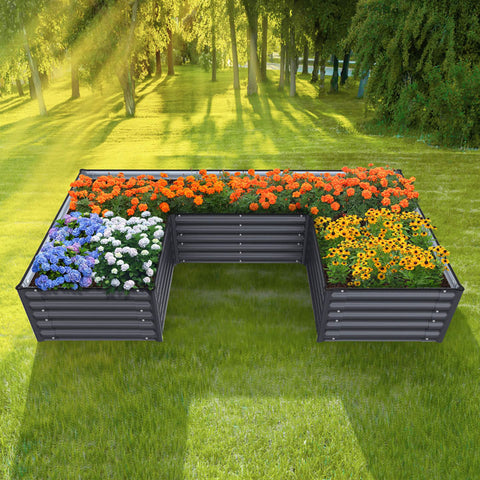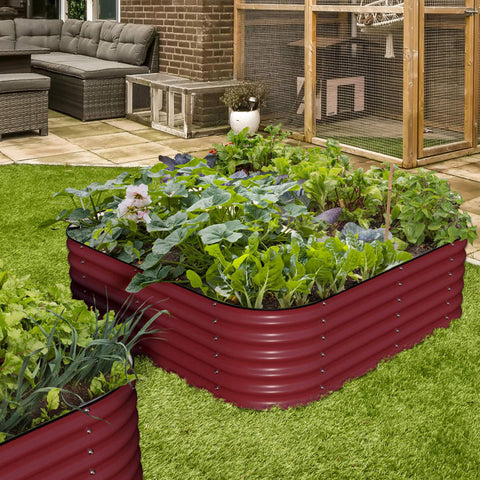Tips from Olle Garden Bed: Preparing Your Garden for Fall
As summer fades away, fall is just around the corner, offering a pleasant time to enjoy the outdoors without scorching heat. To revitalize your garden beds and witness vibrant blooms in the cool months ahead, there are several tasks you can undertake now.
Gardening can be quite labor-intensive during the dog days of summer. However, a little effort in cleaning up your garden during cooler nights will pay off later. Preparing your garden for fall is different from the heavy work required for winter preparations and less labor-intensive than spring planting. Nevertheless, some key tasks will help your garden transition smoothly from summer to autumn.

Here are 15 essential tasks you can carry out to nurture your late summer garden and get your plants ready for a splendid fall display:
Observe Your Surroundings
Before making any significant decisions, carefully observe your garden and assess the condition of the plants. Consider which plants are thriving in their spaces and which ones might be better suited for relocation. Some items can be moved, while others should be left until spring.
Check for Pests and Diseases
Take action to treat existing pest or disease issues and prevent future infestations in the garden.
Divide, Transplant, or Prune Overgrown Plants
Identify which plants have outgrown their space and need division, transplanting, or pruning. Take inventory of what's left and what needs to be done to formulate a plan.
Harvest Summer Vegetables
As the yield of warm-weather vegetables slows down, it's time to prepare for fall vegetables to take their place. Harvest any remaining beans, tomatoes, and other crops. Consider pickling okra or trying out famous pumpkin stew recipes.
Thoroughly Weed
Summer is the prime season for weed growth in the garden. Thoroughly weeding at the end of summer is essential for several reasons, such as preventing weeds from competing with crops for water and nutrients, blocking crop root systems, and attracting unwanted pests to the garden.
Deadhead
Trim back all summer-flowering perennials. Deadheading encourages more flowers and extends the blooming period into fall, an important task for growing healthier, more flowering plants.
Remove Spent Annuals and Divide
If you planted annuals in spring, you'll likely find some of them past their prime and no longer looking their best. Once your annuals have finished flowering, you can remove them from the garden, making space for fall-blooming annuals.
Take Cuttings
Now is the time to take cuttings if you plan on propagating in the spring. Some plants can regenerate through cuttings when overwintered indoors, while others are true annuals. Research the behavior of the plants you wish to propagate in their native habitat. If they are perennials elsewhere, you may be able to propagate them indoors during the winter.
Collect Seeds
If you intend to sow seeds in the spring, you can save on seed packet orders by collecting seeds yourself. Many flowers and vegetables with dried seed pods await collection at the end of summer.
Soil Improvement, if needed
Once you've removed crops from the summer, it's an ideal time to improve the soil. This is the best time to add organic fertilizers like compost or manure to the garden. While chemical fertilizers can quickly provide nutrients to plants during the growing season, organic fertilizers break down over time, enriching the soil.
Replace with Fall Annuals
After removing early-blooming annuals and improving the soil, you have space to replace them with fall-blooming annuals, extending the garden's color throughout the autumn. Happy plants in the spring often also respond well to the fall weather.
Check on Perennials
Keep an eye on your perennial plants as well. Look for signs of diseases, rot, damage, and possible insect infestations. Late summer is an excellent time to tidy up these plants, removing damaged branches and leaves, and treating for pests and diseases to help them recover before the cold weather arrives.

Transplant Potted Perennials
Consider transplanting potted perennials into the ground at this time. If your perennials have outgrown their containers or you wish to move some into the ground, now is the time to do so. Make sure the plants are cold-hardy for your area. Planting them now gives them a few months to acclimate before the cold weather sets in.
Harvest Herbs
Late summer is the time to pay extra attention to your herbs. Many herbaceous plants may look wilted by now. If you plan to leave them outdoors, this is the perfect time to harvest what can be dried or frozen. Some herbs dry well, while others, like basil, have better flavor when used fresh. Make paste to preserve these herbs and freeze for future use.
Water Thoroughly
After taking care of all the necessary tasks, give your garden a good drink of water. This helps newly planted fall-blooming annuals establish roots and rejuvenates everything in the garden.
The end of summer and the arrival of fall brings a temperate and delightful time for outdoor activities. By taking some time to tend to your garden now, you will have a healthier and more beautiful garden to enjoy during the cooler months. These few months of early fall are when I most appreciate the abundance of summer without the scorching heat. It's truly a rewarding time for gardening!
